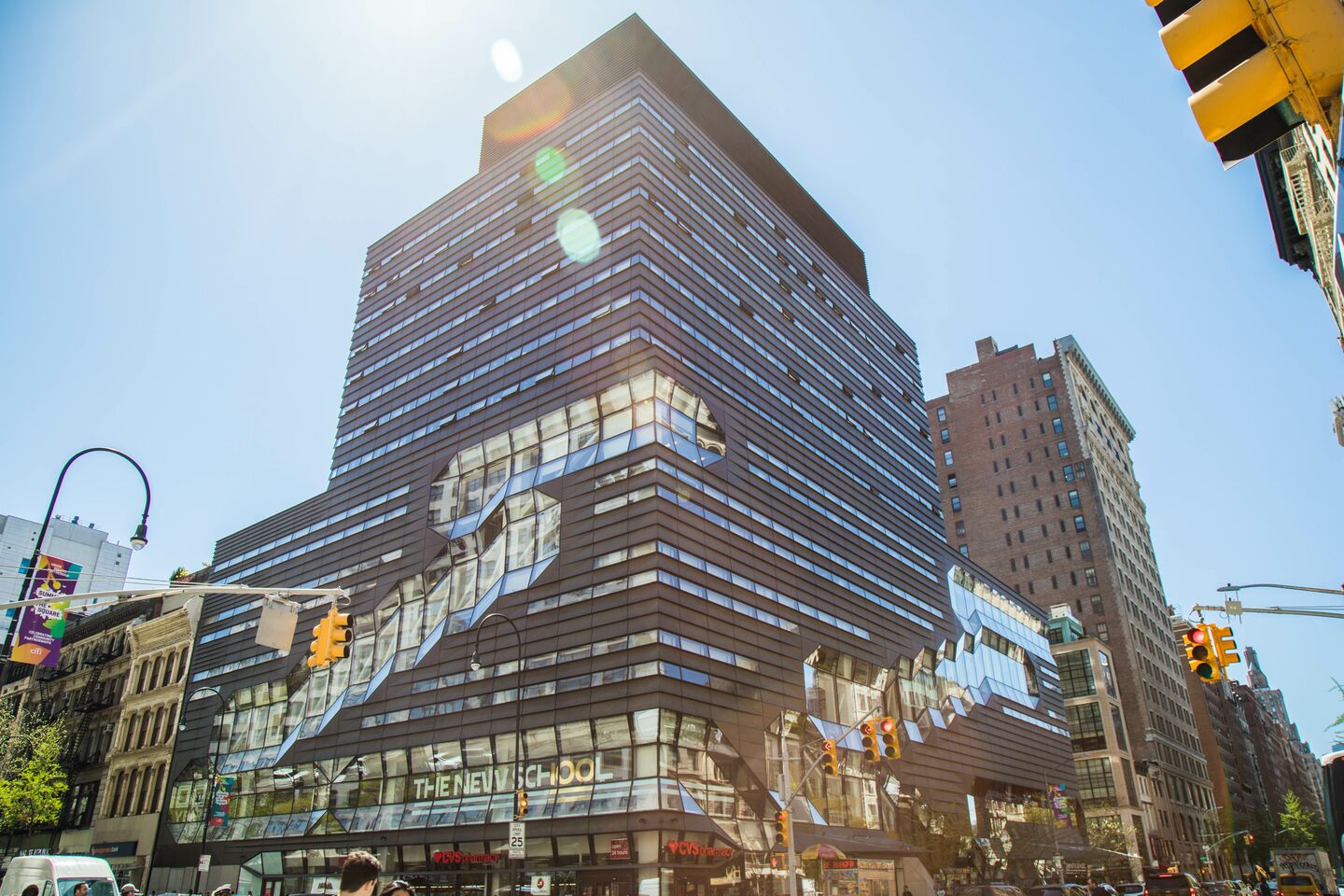
Operating a Sustainable Skyscraper
When the New School building at 66 West 12th Street was constructed in the early 20th century, director Alvin Johnson wanted to create a permanent home for the school that would “express [its] ideals.” In the early 21st century, The New School once again erected a building, the University Center, that embodies core values of the university, including the use of design to address the pressing issue of sustainability.

Building operations and infrastructure have the potential to consume large amounts of resources, especially in NYC, given the need to control room temperatures, heat water for washing, and dispose of waste. The LEED-Gold certified University Center was built with clever, often hidden features that increase the building’s efficiency.
The building is managed by the New School Buildings Department, and many of the sustainability features are overseen by Erik Eibert, assistant director for Sustainability Initiatives. According to Eibert, The New School has three broad sustainable-infrastructure commitments: to reduce carbon emissions related to energy-use, to lower water consumption, and to increase the proportion of waste diverted away from landfills. The university has joined New York City initiatives like the Mayor’s Office of Sustainability’s New York City Carbon Challenge — which sets a goal of reducing The New School’s emissions from 2014 levels 40 percent by 2030 – and the Department of Environmental Protection’s Water Challenge to Universities. “These programs are highlights because they’re helping to show leadership and local progress on global environmental issues” says Eibert.
At 375,000 square feet, the University Center is by far the largest building on campus. “It makes up about a quarter of campus square footage,” says Eibert, and “it’s the most important building on campus from an energy standpoint.” The building operates like a minicampus, with classrooms, performance space, studios, dining facilities, a fitness center, and residential living all contained in two basement levels and 16 above-ground floors. In discussing the building’s operations, Eibert commends the design for “pushing the envelope and showcasing what can be accomplished” to limit resource consumption.

Many of the sustainability-promoting features are not apparent unless you look for them. These features include high-tech lighting systems that adapt using sensors to adjust light levels automatically. Light shelves – those shiny white shelves sitting above the windows – help to reflect light from the perimeter to the interior of rooms. Automatic shades – which you might not notice until someone points out they are moving – help to reduce glare.
Within the University Center is a cogeneration plant which at times produces as much as 25 percent of the building’s electricity. Unlike typical power plants, in which much of the heat generated is wasted, the plant puts heat to use by producing hot water for the building. “Everyone using hot water to shower in the morning — that water is heated by exhaust coming from the cogeneration plant,” says Eibert. There’s also an ice-storage plant used for space cooling and which that helps shift electricity-use to the night when it’s cleaner and less expensive. A water-recycling plant in the basement recycles water and reuses it throughout the building in mechanical systems and to flush toilets.
One of the most visible design elements is the green roof outside of the seventh floor. Just by being there, “the green roof asks the questions, Why construct it? What does it do?” says Eibert. The roof makes the building’s sustainability features easily apparent, inspiring students interested in sustainable design to “investigate these features and start to examine why they are important, and how they fit in.” In addition to just looking pretty, the green roof reduces storm-water runoff into the sewer system, and helps to decrease the urban heat-island effect.

Eibert also points to the contribution made by one class that led to improvements in the building’s functionality- “There was a class interested in interior comfort and understanding preference around temperature. They designed a survey that assessed people’s comfort and that research helped to inform real adjustments. That type of involvement is really valuable.”